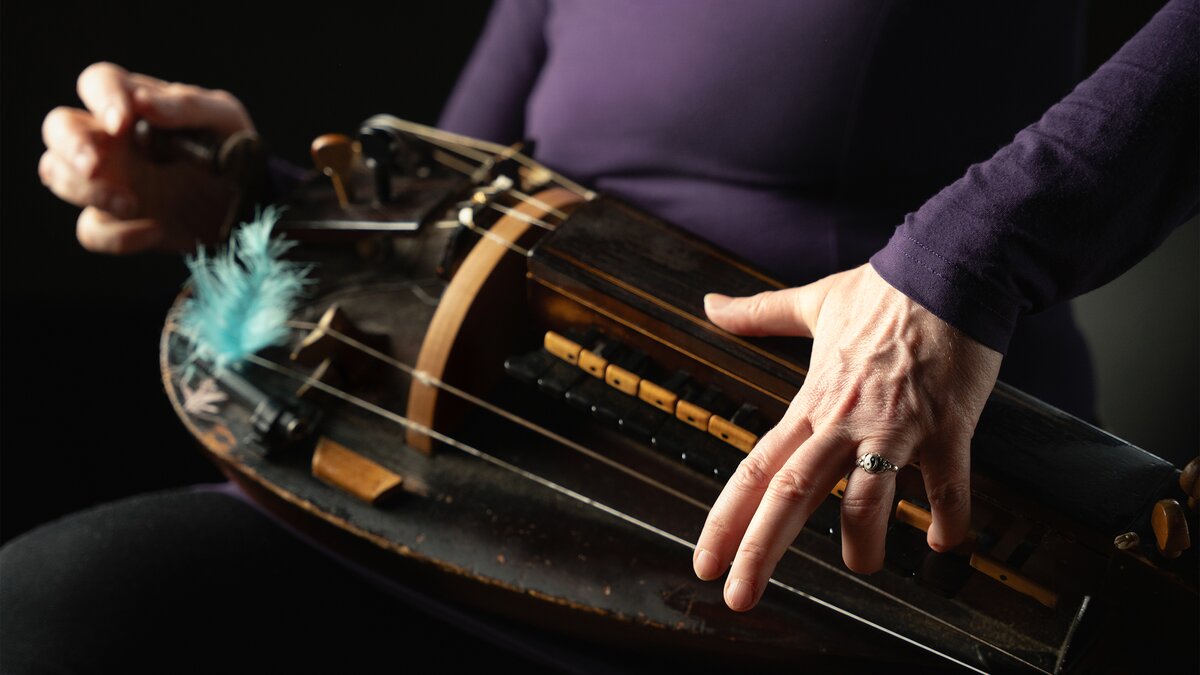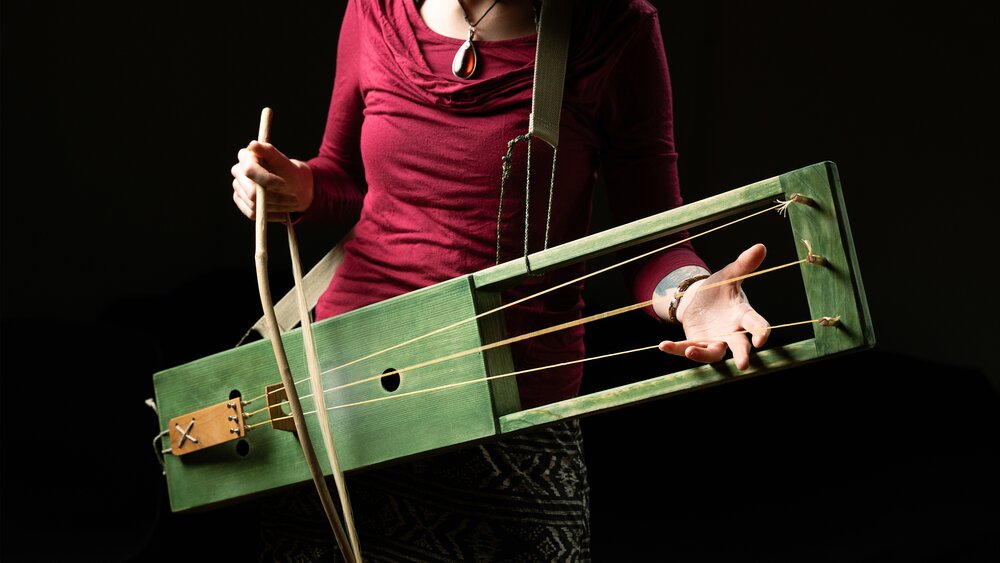
Grimm is the first official collaboration between Bleeding Fingers Music, an acclaimed LA-based composer collective, and Orchestral Tools, the Berlin-based creator of professional virtual instruments. Although an entire globe separates the companies and they specialize in disparate areas of the composing field, they’ve crossed paths a few times before. In 2023, Jacob Shea was one of the guest judges in a sound design competition run by Orchestral Tools. Before that, Berklee alumni Kara Talve and Sami Goldberg appeared in a panel about the state of music education with Orchestral Tools at the world-renowned college of music. And of course, composers from Bleeding Fingers Music have used sounds from Orchestral Tools to supplement their scores.
So when Bleeding Fingers Music determined they needed a new scoring tool for an upcoming project set in medieval Europe, they turned to Orchestral Tools. After some discussions, the concept for the library crystallized: Experimental medieval textures— old instruments with a more contemporary sonic aesthetic. Frederik Theyssen, the creator of Orchestral Tools’ Creative Soundpacks series, was the perfect choice to lead the project for Orchestral Tools—his expertise and sensibilities were the perfect match to deliver a tool catered to Bleeding Fingers’ specifications—and also useful to the composing community at large.
“When we were planning the collection, [Bleeding Fingers Music] actually had a spreadsheet of characters from the series and the instruments they associated with them,” says Frederik. This list included many of the usual suspects you might expect for Renaissance or baroque-era music: Hurdy-gurdy, tagelharpa, sackbut, baroque recorders, flutes, and lutes. But it was unanimous that Grimm should not be a run-of-the-mill bardcore library. So how did it evolve from an idea and a spreadsheet into the final release?
For starters, Frederik felt the best way to avoid venturing into fantasy-cliche territory was to focus on small ensembles (rather than individual instruments) and textural articulations. He combined non-orchestral instruments and baroque strings into six unique ensembles representing woodwinds, high strings, mid strings, low strings, plucked strings, and brass—a medieval orchestra of sorts.
Additionally, during one of the initial discussions, Bleeding Fingers Music had a concept, very loosely paraphrased: Medieval but also rock. While the discussions and briefings were, of course, far more detailed and nuanced, this basic idea became one of the guiding principles that would influence many decisions further down the line.

The articulations were conceived to produce interesting and evocative textures more than simple recreations of single instruments. This included ideas such as removing the mouthpieces of recorders and blowing straight into them to bring out the breathy, otherworldly quality of the instruments. “The musicians were very cooperative,” Frederik reflects, “although this is not really what they normally ever do on these instruments.” The collection also contains many articulations with intervals of fourths or fifths—very common intervals in both medieval and rock music.
Some of the aleatoric articulations captured at the recording sessions were also designed to provide ample material to use in the processed patches, which were shaped and crafted using analog and digital effects. Here, the “medieval, but rock” mantra really comes to the fore, audibly apparent in the grit and bite of the distortion or ominous filtering.
Grimm is a collection of sounds that exist out of time—equally at home in epic tales from the past or contemporary crime dramas. It's the product of a collaboration between two industry titans at the top of their game.